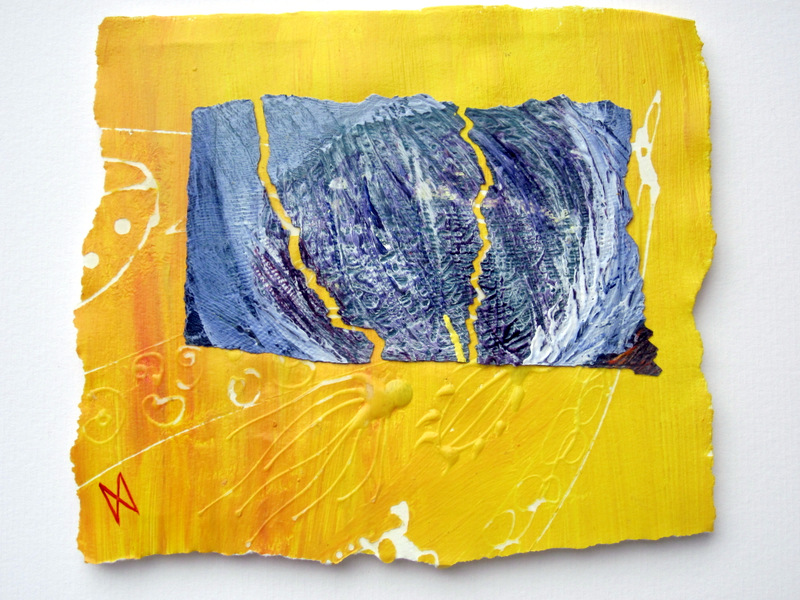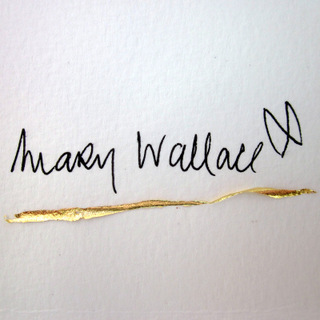Sometimes It's Good To Look Back...
Sometimes it's good to look back... This is one of those times. A review by Tom Mooney of my exhibition in Wexford Arts Centre way back in 2008. Now where did that time fly by to?

'First Movements' Mary Wallace ©
Thursday, January 24, 2008
ART REVIEW by Tom Mooney, Editor, Echo Newspaper Group
'YELLOW THROUGH BLUE' - Wexford Arts Centre 12th Jan to 23rd Feb 2008
THE LATEST exhibition by Mary Wallace at Wexford Arts Centre, continues her exploration using mixed media of themes revisited in her recent past, but with the vibrancy of hue and tone we have come to associate with this conscientious artist. Yellow Through Blue continues her discovery in Immram, Fish Tales and Bird Song which graced The Cockleshell Art Gallery in September: back then, Wallace’s vision was as colourful and as exotic as Rimbaud’s, and that we were confronted by sea monsters with marble eyes, exotic fauna and trees camouflaged by the down of a bird.
The sgraffito technique, more commonly associated with the old Venetian masters, lends itself to Wallace’s visions. Sgraffito traditionally was, a style either of wall decoration, produced by applying layers of plaster tinted in contrasting colours to a moistened surface, or in ceramics by applying to an unfired ceramic body two successive layers of contrasting slip, and then in either case scratching so as to produce an outline drawing. Another use of sgraffito is seen in its simplified painting technique. One coat of paint is left to dry on a canvas or sheet of paper. Another coat of a different colour is painted on top of the first layer. The artist then uses a palette knife or oil stick to scratch out a design, leaving behind an image in the colour of the first coat of paint. Sometimes a first coat of paint is not needed and the wet coat scraped back reveals the canvas.
Wallace works in this exhibition primarily in acrylic, a medium which facilitates an artist whenever they decide to work fast, because two of the advantages of acrylic is a quick drying technique, and a versatility which can mirror the pluvial outpourings of the imagination. It can be academic to wonder how abstract an artist has become, because occasionally the theory is not given life on the canvas, and sometimes a work can be so interesting that it does not require an explanation to resuscitate it, because it is unnecessary. Such is the case with Wallace’s latest exhibition, a dozen pictures that illuminate and hang from the walls of the wonderful D’Lush Café like new stars in the Northern Sky.
Yellow Through Blue is an accessible but still mysterious exhibition: it beckons like so many aurora borealis, magnetic in the lure of the hard hewn blues and red, a conception of rebellious poise. But why should we be surprised. If you have followed the development of this artist in recent years, you will have witnessed firsthand her visual ability to respond to an initial colour or shape, and take it from there.
There is about Wallace’s work the rhythm and the soil of the odyssey, the perception of evolution through metamorphosis, and I suppose she leaves us with something akin to a chrysalis, with no attempt at purgation, just the layered exploration of something engulfed by its own genesis.
She says that she paints on paper that has been torn in a very deliberate way to give the appearance of a fragment. Maybe so, but perhaps her intuition and the reservoir of archetypes in her psyche has told her through dreams and hibernating visions that our senses can perceive things that are worth expressing, but not in a traditional sense. There alone is a splendid reason to have a Mary Wallace image hanging on your wall: no sunset nor sunrise is the same, and if your imagination has legs and if your eyes have their own aperture, unclouded by ignorance, her glorious use of colour unfurls like laden lava.
Rimbaud’s well recycled quote that you need a disordering of all the senses to become a voyeur or a seer is never more relevant than engaging with this exhibition: the artist requires an emotional input from the viewer, and so she should, because art, like religion, is dead on its feet if it is beyond the silent drama of catharsis.
'Awakening' Mary Wallace ©

